 |
| Canada |
| British Columbia |
| Vancouver |
|
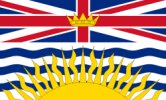 |
Gastown was Vancouver's
first downtown core and is named after "Gassy" Jack
Deighton, a Yorkshire seaman, steamboat captain and barkeep who
arrived in 1867 to open the area's first saloon. The town soon
prospered as the site of Hastings Mill sawmill, seaport, and
quickly became a general centre of trade and commerce on Burrad
Inlet as well as a rough-and-rowdy resort for off-work loggers
and fishermen as well as the crews and captains of the many
sailing ships which came to Gastown. In 1886, the town was
incorporated as the City of Vancouver. It fell victim to the
Great Vancouver Fire the same year, losing all but two of its
buildings. Today Gastown is a mix of "hip" contemporary
fashion and interior furnishing boutiques, tourist-oriented
businesses, restaurants, nightclubs, poverty and newly upscale
housing. In addition, there are law firms, architects and other
professional offices, as well as computer and internet
businesses, art galleries, music and art studios, and acting and
film schools. Gastown has become a hub for technology and new
media. Popular annual events that take place on the cobblestone
streets of Gastown include the Vancouver International Jazz
Festival and the Tour de Gastown international bicycle race.
Gastown's most famous landmark is the
steam-powered clock on the corner of Cambie and Water Street.
Built to cover a steam grate the clock was built as a way to
harness the steam and to prevent street people from sleeping on
the spot in cold weather. Its original design was faulty and it
had to be powered by electricity after a breakdown. The steam
mechanism was completely restored with the financial support of
local businesses as it had become a major tourist attraction, and
is promoted as a heritage feature although it is of modern
invention.
Click on the
picture to have a larger version
| Various
houses around in Gastown |
 |
 |
 |
 |
 |
| |
Some
nice details of decorations |
|
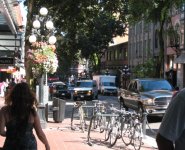 |
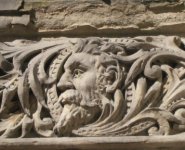 |
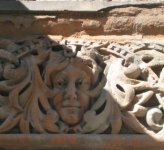 |
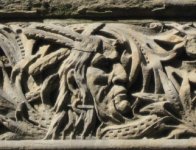 |
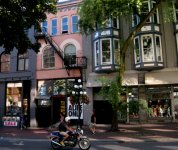 |
| Some
more buildings - and a working steam clock! |
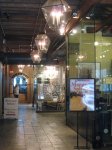 |
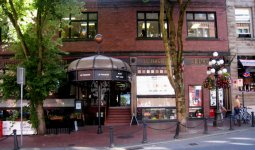 |
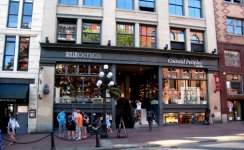 |
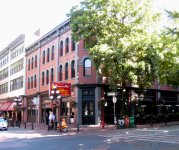 |
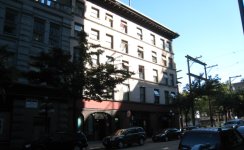 |
 |
< Back to the index



